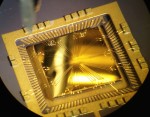
2015 EPSRC Science Photography Competition Winner: Gold Ion
Trap, by Mrs. Diana Prado Lopes Aude Craik, University of Oxford (EPSRC)
Cool Pic Archive Pages
| 1 |
2 | 3 |
4 | 5
| 6 | 7
| 8 | 9
| 10 | 11
| 12 | 13
| 14 | 15
| 16 | 17
| 18 | 19
| 20 | 21
| 22 | 23
| 24 | 25
| 26 | 27
| 28 | 29
| 30 |
These images have been chosen for their uniqueness. Subject matter ranges from
historic events, to really cool phenomena in science and engineering, to relevant
place, to ingenious contraptions, to interesting products (which now has its own
dedicated Featured Product
category).
The
winners of the 2016 EPSRC "Science
Photography Competition" have been announced. It was held by the Engineering
and Physical Sciences Research Council (EPSRC), the "UK government agency for funding
research and training in engineering and the physical sciences, investing more than
£800 million a year in a broad range of subjects - from mathematics to materials
science, and from information technology to structural engineering." Recipients
of funding from EPSRC submit photographs for judging.
This year's top prize titled "Microwave Ion-Trap Chip for Quantum Computation"
went to Mrs. Diana Prado Lopes Aude Craik, University of Oxford, for her photo of
a gold ion trap. Per the website, it "shows the chip's gold wire-bonds connected
to electrodes which transmit electric fields to trap single atomic ions a mere 100
microns above the device's surface." "When electric potentials are applied to the
chip's gold electrodes, single atomic ions can be trapped. These ions are used as
quantum bits ('qubits'), units which store and process information in a quantum
computer. Two energy states of the ions act as the '0' and '1' states of these qubits.
Slotted electrodes on the chip deliver microwave radiation to the ions, allowing
us to manipulate the stored quantum
..."
The "Gömböc Equation" blob (see below) from 2014
is uber cool. "Meet the Gömböc, the world's only artificial self-righting shape.
Unlike Weebles and inflatable toys, which use a strategically-placed weight to pull
them upright, the Gömböc has no energy source. No matter how it's placed on a flat
surface, the Gömböc, borne out of complex mathematical theory, will right itself.
The equation defining the Gömböc appears in the background of the photograph "
The website says the contest is in its third year, but I could only find photos
for 2014 and 2016. A few examples are included below. All of the thumbnails derived
from full-size images on the
EPSRC
website.
|
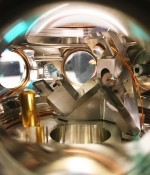
Investigating Light-Matter Interaction Using a High-Finesse Optical
Ring Cavity and Cold Atoms Mr. Andreas Lampis, University of Birmingham
|

Micro-Metal Flower Silicon wire with gold at the tip Dr.
Dhayalan Shakthivel, University of Glasgow
|

Dark Field Light Microscopy Picture of a 40 nm Thick Electrodeposited
Titanium Oxide Layer Miss Katarzyna Sokol, University of Cambridge
|
|
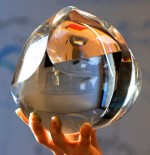
The Gömböc Equation World's only artificial self-righting
shape Professor Alain Goriely
|
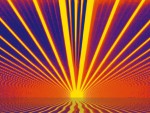
Graphene Sunrise Measurements of graphene's electrical capacitance
when subjected to a magnetic field Professor Sir Konstantin Novoselov and
Dr Daniel Elias, University of Manchester
|
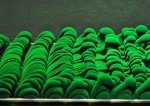
Rayleigh Taylor Instability Image, of salt water accelerating
into fresh water Megan Davies Wykes, University of Cambridge
|
Posted March 24, 2016
|















